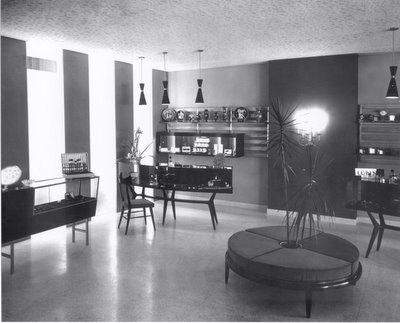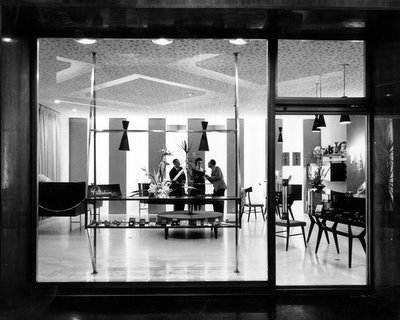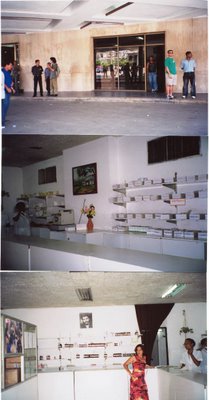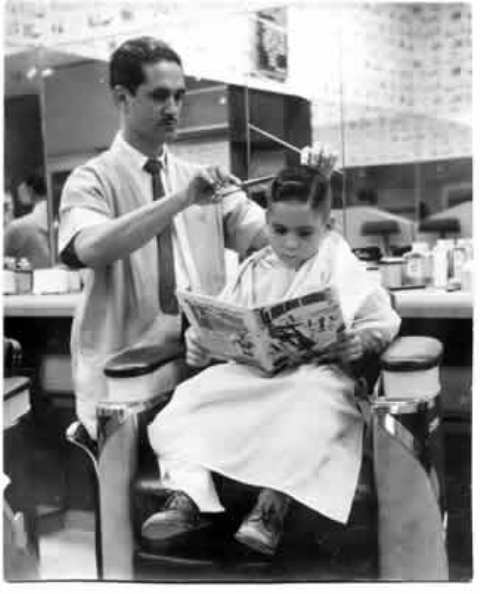A request from a friend...cannot be ignored


So we take another fork on the road to the past. But all for a good cause. My good friend Jorge of The Real Cuba website happened to be a neighbor back during the time we lived in our last digs in Havana - and we did not even know it until earlier this year.
We met by chance in cyberspace, when I sent him a feedback email complimenting him on the website and mentioned having lived at the Edificio Focsa, 17 and M streets, Vedado, Habana, Cuba, and added my parents had owned/managed a jewelry store there. Next thing I knew, I got an "excited email (I suppose an email can get electronically excited when certain things happen - positively!)" from him because he too, had lived at Focsa and was happy to connect with an old neighbor. Clarification: we were neighbors then, but we did not know it. However, he clearly remembered the store, which he and other family members had browsed and shopped in, many a time. My mother clearly remembered his aunt, after I mentioned "meeting" Jorge who had provided some relatives' names to jog mom and dad's memory.
One of the comments sent to this blog was from Jorge, in reference to the November 10, 2005 posting. He asked for "more photos of Palladium." I saw him this weekend, and he reminded me of this request. Well, although I was saving these for the proposed website about El Focsa, this is one request which cannot be refused. Therefore, on with the show!
The photos above, which open this post, date from February 1957, when the store was inaugurated. By coincidence - a macabre or chilling coincidence, perhaps - the publicity photos were made by Estudios Korda in Havana. Yes, the same Korda who did the so-called "iconic" photograph of a certain asthmatic Argentinian who met his end when sticking his nose into what was none of his business in Bolivia, October 1967. Ironically, Mr. Korda's closeness to the grouchy bearded old man and his cronies did not keep him from-eventually-losing his business to the grouchy bearded old man and his cronies, but as Mr. Korda became the grouchy bearded shakin' old geezer's personal photographer, I suppose he did OK in a "revolutionary" sort of way.

The next photo - also from Estudios Korda, was taken the very day Palladium opened for business. Notice there had not been time to letter in the store's name on the glass facade. Mother and father can be seen inside, with their friend, Ernesto Gomez Sampera, architect/designer for the Focsa building project, on the right.

All kinds of "neat stuff" were sold at Palladium - fine watches of different brands - Juvenia, Benrus, and others; clocks by Imhoff; figurines from Hummel of Germany; perfumes by Lubin. Dad remembers that the mother of the architect Gomez-Sampera, who lived in the building, loved a perfume called "Nuit de Longchamps," by Lubin.
The decor for the store, according to my mother, was inspired by what they saw at the lobby of the Fountainebleau Hotel in Miami Beach, in one of their trips there. The Fountainebleau had been inaugurated in 1954.
And, you may ask, what was Palladium's fate? You might refer to the posting for November 10th, where I said my aunt, Josefina Prego, was left in charge. She was there, valiantly holding the fort against the inevitable when, sometime in 1961, after the Bay of Pigs fiasco (a fiasco of a certain President's doing, and not on the part of the brave men of Brigade 2506), from what I remember she wrote in a letter to us, "la interventora" - meaning some female "revolutionary" official, walked in with her entourage and seized the store, no doubt in the name of the "revolution." My mother had said she did not want to be there when that happened, and, thankfully, God granted her wish.
And today you can behold the ghost of Palladium, in these photos taken by my cousin, Ana Prego, on her visit to Havana in the summer of 2004...

Palladium is now a drugstore - with mostly bare shelves; a mute comment on the bearded old man's "revolutionary achievements." Dad's comments, on seeing these images was: "Well, the glass shelves are still there - they were designed to be sturdy." The icon of a certain asthmatic Argentine who died of lead poisoning in Bolivia, October 1967, hangs on the wall. Something which, of course, would not have been the case when Palladium was Palladium. Woulda clashed with the decor, you know.

1 Comments:
My father negotiated the sale of the windows in the building FOCCSA. We left Cuba 1960.
Post a Comment
<< Home